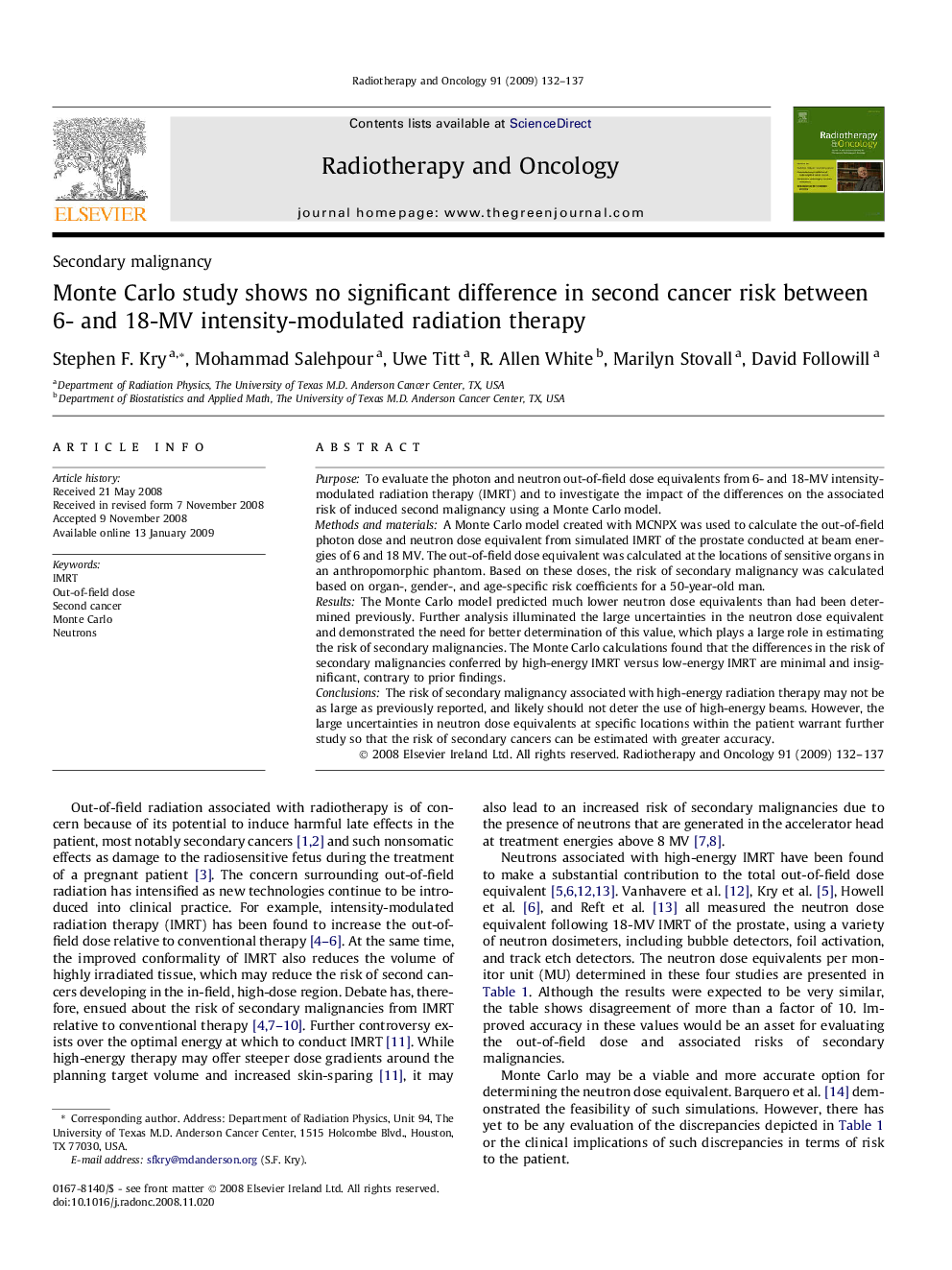| Article ID | Journal | Published Year | Pages | File Type |
|---|---|---|---|---|
| 2159447 | Radiotherapy and Oncology | 2009 | 6 Pages |
PurposeTo evaluate the photon and neutron out-of-field dose equivalents from 6- and 18-MV intensity-modulated radiation therapy (IMRT) and to investigate the impact of the differences on the associated risk of induced second malignancy using a Monte Carlo model.Methods and materialsA Monte Carlo model created with MCNPX was used to calculate the out-of-field photon dose and neutron dose equivalent from simulated IMRT of the prostate conducted at beam energies of 6 and 18 MV. The out-of-field dose equivalent was calculated at the locations of sensitive organs in an anthropomorphic phantom. Based on these doses, the risk of secondary malignancy was calculated based on organ-, gender-, and age-specific risk coefficients for a 50-year-old man.ResultsThe Monte Carlo model predicted much lower neutron dose equivalents than had been determined previously. Further analysis illuminated the large uncertainties in the neutron dose equivalent and demonstrated the need for better determination of this value, which plays a large role in estimating the risk of secondary malignancies. The Monte Carlo calculations found that the differences in the risk of secondary malignancies conferred by high-energy IMRT versus low-energy IMRT are minimal and insignificant, contrary to prior findings.ConclusionsThe risk of secondary malignancy associated with high-energy radiation therapy may not be as large as previously reported, and likely should not deter the use of high-energy beams. However, the large uncertainties in neutron dose equivalents at specific locations within the patient warrant further study so that the risk of secondary cancers can be estimated with greater accuracy.
